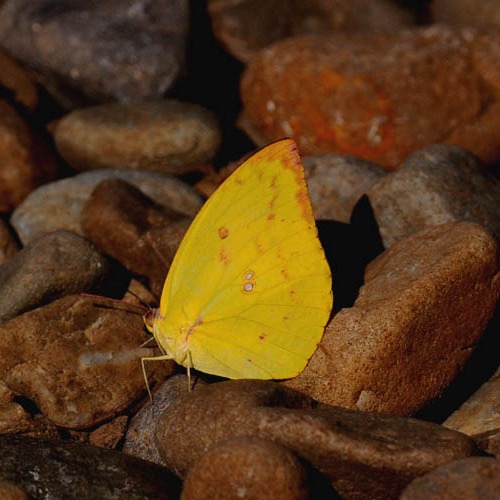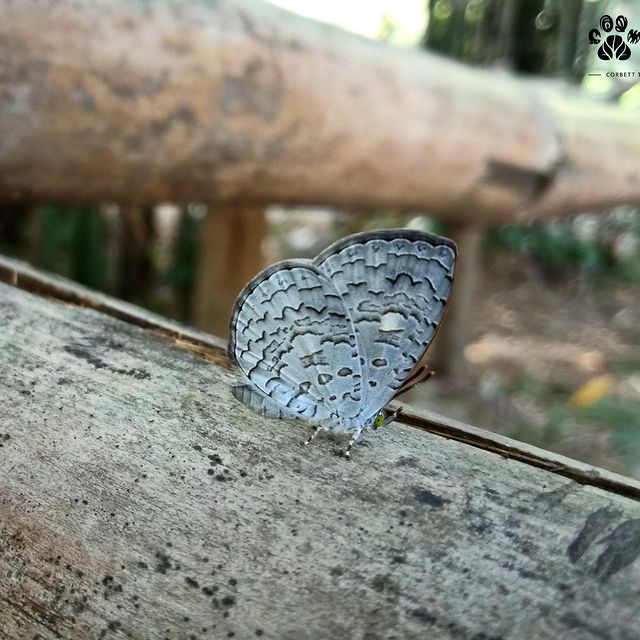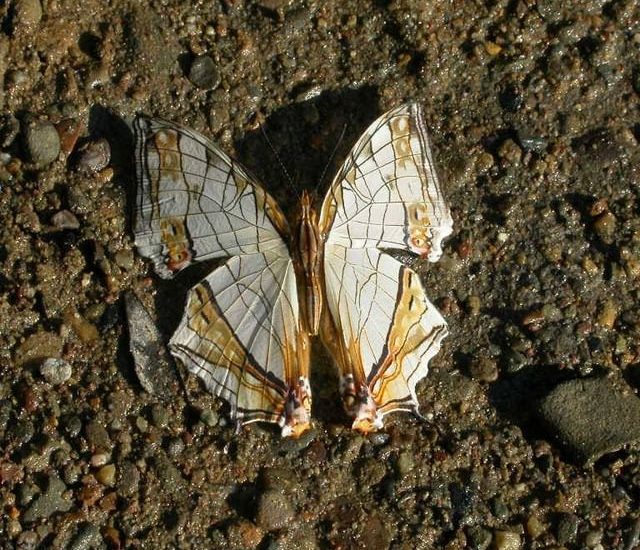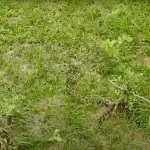Butterflies, like all insects, have a head, thorax, and abdomen. Three legs make up the thorax. Unlike moths, butterfly antennae are clubbed. The flower-sipping proboscis can be coiled. Polymorphic butterflies use camouflage, mimicry, and aposematism to avoid predators.
Adults in Lepidoptera have four scale-covered wings. Butterfly wings are coloured with melanins for blacks and browns, uric acid derivatives and flavones for yellows, and structural coloration from scale and hair microstructures for blues, greens, reds, and iridescent colours.
Most butterflies are diurnal, have vivid colours, and rest with their wings vertically above their bodies, unlike moths, which fly at night, are sometimes cryptically coloured (highly camouflaged), and either lay their wings flat or fold them tightly over their bodies.
Aerial courtship often involves pheromones. Butterflies mate on the ground or perch. Tail-to-tail copulation lasts minutes to hours. This and other adult behaviours depend on simple genital photoreceptor cells.








